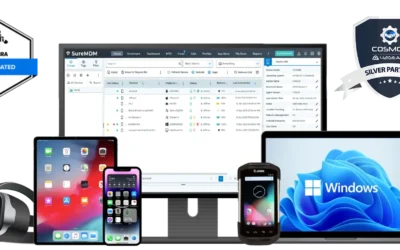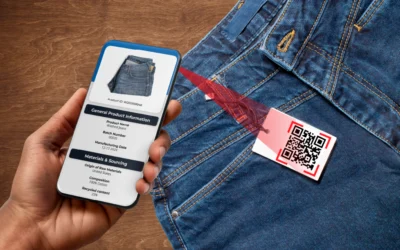In virtually every industry, mobile technologies have become an essential way to digitize, automate and streamline workflows for increased productivity, efficiency, and accuracy. With widespread labor shortages and the cost of doing business on the rise, investing in mobile automation and efficiency is more important than ever.
However, to figure out the right solution for the job, secure the budget and obtain buy-in with management, it’s important to follow some crucial best practices. Here are six key steps in the process of choosing the best mobile technologies for your business and how to achieve your technology goals.
- Remove Your Roadblocks
Underperforming mobile technologies can slow down and impede your workflows and operations, and the wrong solutions can create a lot of unwanted and unanticipated headaches. This is why it’s vital to focus on removing roadblocks when choosing mobile technologies.
Above all, it’s crucial to make sure the types of devices you choose and their specific form factors are easy to use and that they match your specific workflows and use cases. You don’t want your workers to be hindered by devices that are hard to use or aren’t right for the job.
The right solutions also need to withstand your environment so you’re not dealing with downtime, hardware damage, and expensive fixes or replacement costs. And it’s important to keep cybersecurity in mind as well, so you’re not faced with security vulnerabilities and can easily keep your devices updated and protected.
For example, for most enterprise use cases, our team at MSM Solutions strongly recommends Zebra mobile technologies because Zebra has arguably the most expansive portfolio of purpose-built solutions for virtually every need and application. And Zebra has an unrivaled reputation in the mobility industry for cost-saving durability and the highest quality devices and performance on the market.
- Get the Green Light
In many companies, you’ll need to secure buy-in from executive sponsors to get the budget to invest in mobile technologies. So you’ll need to make the case for the value and ROI (return on investment) they can expect.
Start by examining your current workflows and getting a firm understanding of what your workers actually need and want. You need to understand firsthand what’s working and what’s not in roles and jobs. Identify where mobile technologies can help and where they increase productivity, efficiency and accuracy as well as reduce waste.
Building a project team will help you determine and define your mobility criteria and identify the right solutions. A good team will include multiple roles inside and outside your organization, such as workers, managers, IT team members, and mobile technology providers or experts from outside your business.
To start identifying potential solutions that match your criteria, do your research and use credible sources such as articles, analyst reports, white papers, user boards, peer reviews, and case studies. You can also work with a technology provider who can help you explore potential mobile solutions that match your needs, estimate costs, develop an initial budget, and calculate an ROI on that investment.
Some of the most common ways to calculate ROI include breakeven analysis, payback period, net present value, and internal rate of return. Get familiar with these concepts and get help from your technology partners to help you make the case to executive sponsors and get them on board with your mobile technology plan.
- Create a Priority Matrix
Once you’ve identified your core mobility needs and budget, as well as specific solutions you might need to consider and deploy, it’s a good idea to create a priority matrix to compare must-have capabilities to nice-to-haves and what you don’t need, so you can figure out justifications and specifications for what’s truly essential.
Working with a technology provider that can help you develop and complete a priority matrix will allow you to use it as a framework to guide further evaluation and selection.
- Shop Around and Try Before You Buy
Once you’ve determined your requirements and priorities, narrow down your choices by trying solutions before you finalize your decision. With enterprise technologies, manufacturers such as Zebra provide demo devices that allow you to test and try different solutions in your environment.
Give the demo devices to workers to help evaluate the solution and prove the business case. Take note of whether any training is required and how long it takes to on-board new users.
You can also test how devices integrate with your systems or existing technology, and you can even try demo versions of actual workflow software, to see how well solutions will work in your processes and environment. Make sure to ask plenty of questions of your technology provider or hardware manufacturers too. Here are some sample questions you should consider:
- How do the devices hold up to drops, tumbles, shock, wind and rain, extreme temperatures, sand, dust or vibration?
- What are the shipping lead times?
- What are the third-party installation/implementation support and service policies?
- Is the support team accessible to the manufacturer’s post-sale?
- What are the average failure rates for each device, as well as the average time-to-failure?
- What are the warranties and repair processes?
- Will I need an “uplift” service such as extra batteries? Special in-vehicle mounting kits? Upgraded warranties?
- Who will handle wireless activations?
- Will the solution provider be able to meet your timeline for delivery, configuration, etc.?
- Who is the point of contact for hardware or software issues during the pilot period or post-deployment? Someone internally, externally (i.e. the device manufacturer) or both.
- Calculate Your TCO (Total Cost of Ownership)
As you finalize and validate which solutions are the right choices, work with your technology provider to calculate total cost of ownership on the devices. This accounts for all long-term costs related to procuring, deploying, integrating and supporting your devices over their full lifetime.
Calculating these numbers will give you a true and final cost estimate that you can use to finalize a projected ROI, secure final approvals and go-ahead from executive sponsors and stakeholders, and help you see the project through to completion.
- Choose Your Technology Provider and Hardware Wisely
A big key to implementing mobile solutions successfully is working with a technology provider who can help you along the way and has your best interests in mind. Here are a few ways to tell if your provider is serving your best interests:
Responsiveness. Is your technology provider willing to help you for as long as it takes to identify and execute the right solution? Will it provide support to help you continuously optimize your solutions and help you maximize value and sustain performance over time?
Pay attention to how a prospective provider treats you and your business and how involved they’ll be in supporting you. Will they be along for the long-term, or are they just there to sell you solutions and disappear once the deal is closed?
Test their agility. Good technology providers need to be able to accommodate your unique processes and needs. They also need the agility to quickly help you integrate and ensure solution interoperability with your existing systems or with new software or systems that you may be implementing along with your hardware.
Make sure they’re flexible. Ask prospective providers how they’ll help you make any hardware, software and operational adjustments as you deploy, optimize and support your solutions. Are they flexible enough to support your long-term needs without forcing you to make unnecessary and potentially expensive changes to your entire technology structure?
Get referrals. Ask for case studies and testimonials and use them to help evaluate a prospective technology provider and their solutions have performed for other customers.
Be sure they are the right provider for your specific needs. Verify that your technology provider is knowledgeable in the engineering and implementation of mobility solutions for your industry and workflows.
Getting Started with Your Mobile Technology Plan
Hopefully these tips and guidelines will help get started with your mobile technology plan by identifying some of the key steps and best practices you should keep in mind. If you’d like to learn more and get help with developing and executing a complete mobile implementation with the right solutions, feel free to reach out to us at MSM for professional guidance and advice.
We’d be happy to set up a call to discuss your needs and business goals in more detail, and to provide a free consultation to point you in the right direction.
To get started, call us now at 800-832-3170 or visit us at www.msmsolutions.com.



